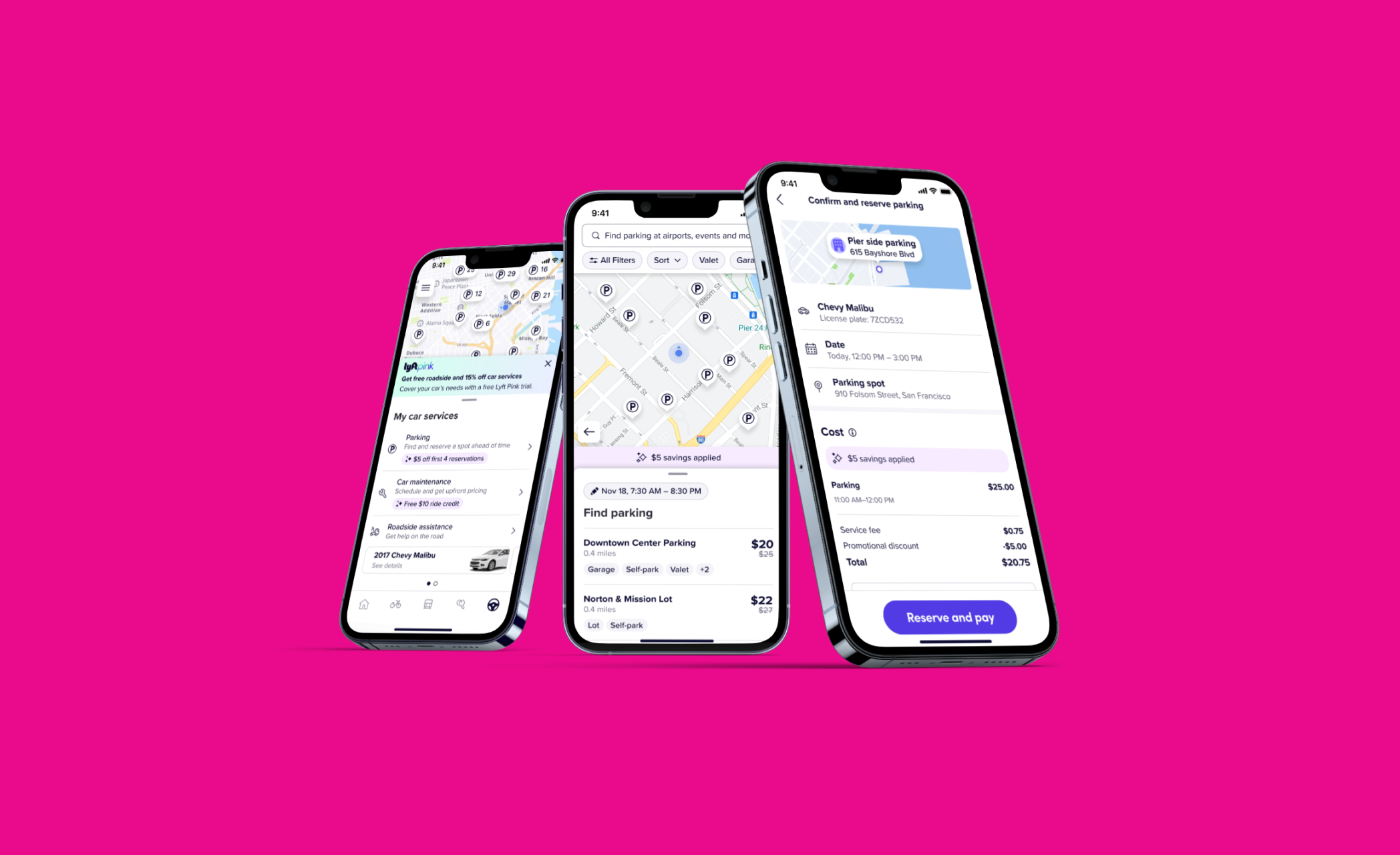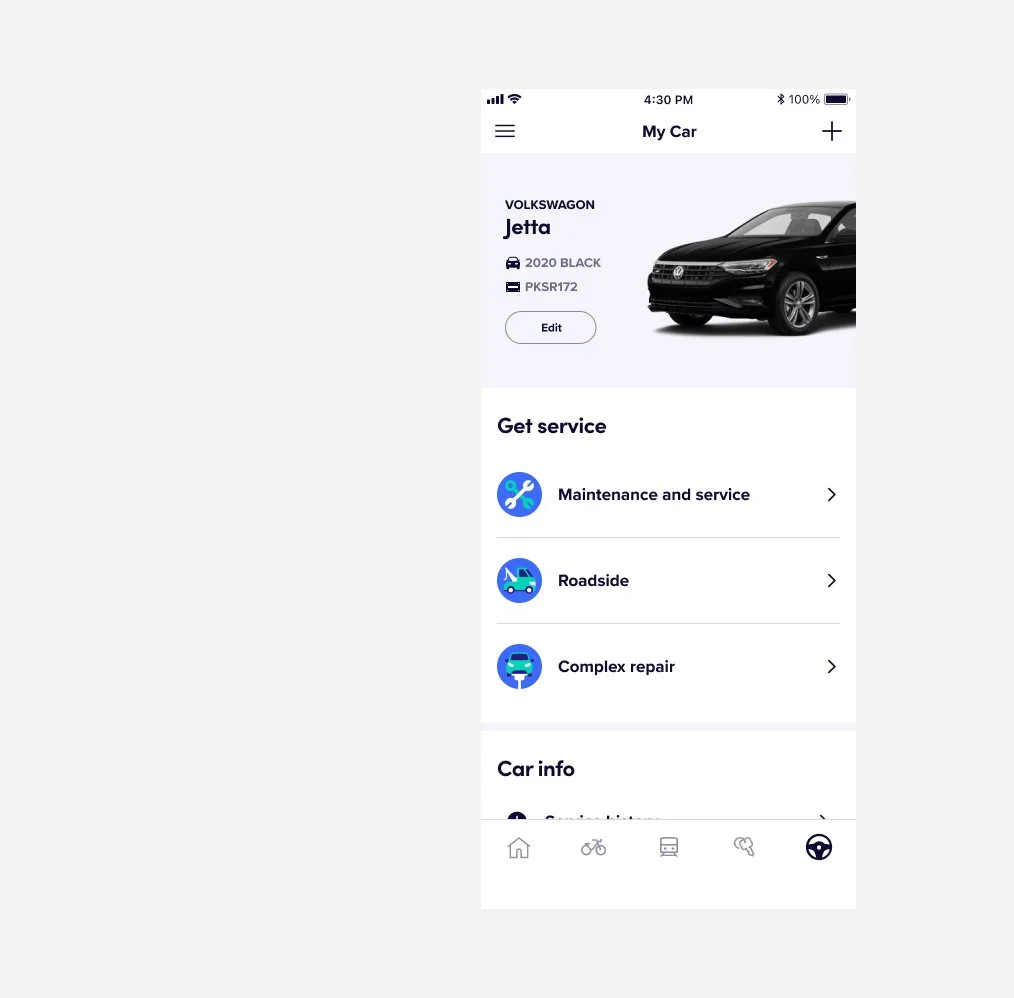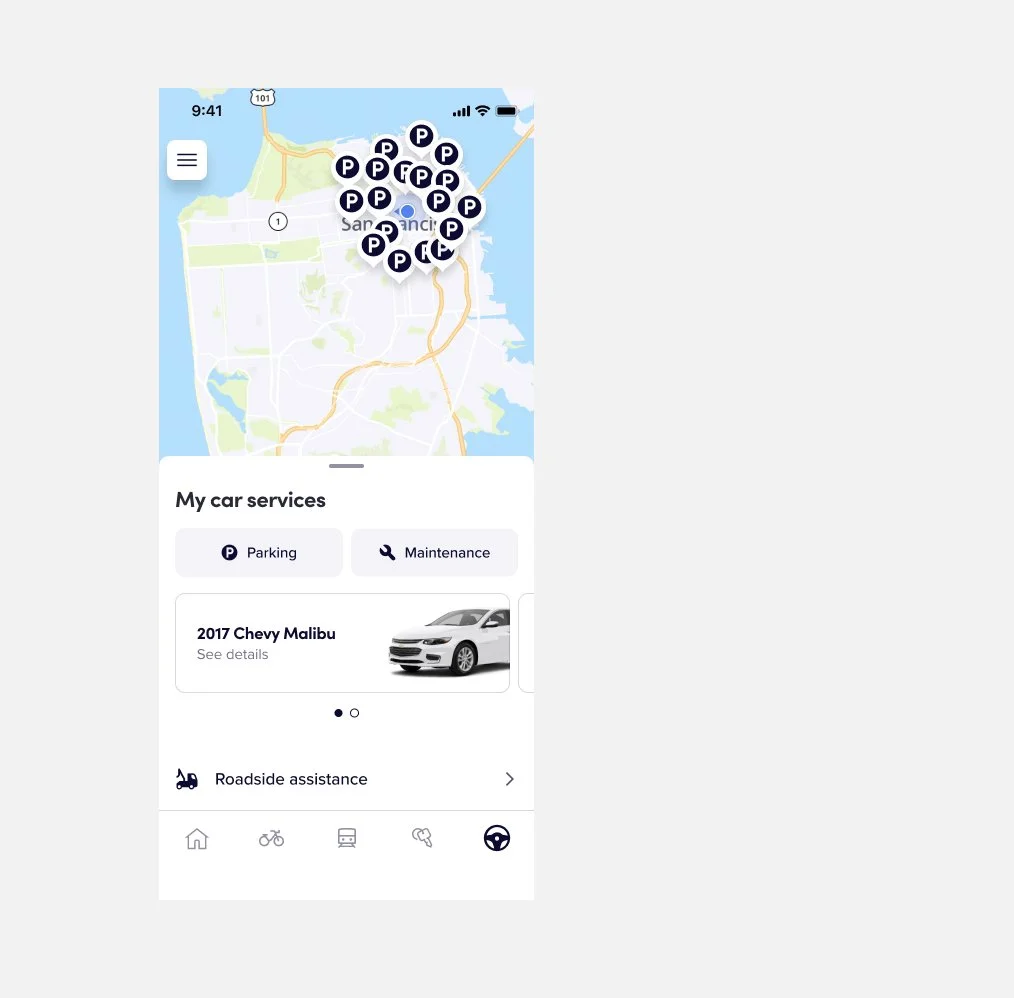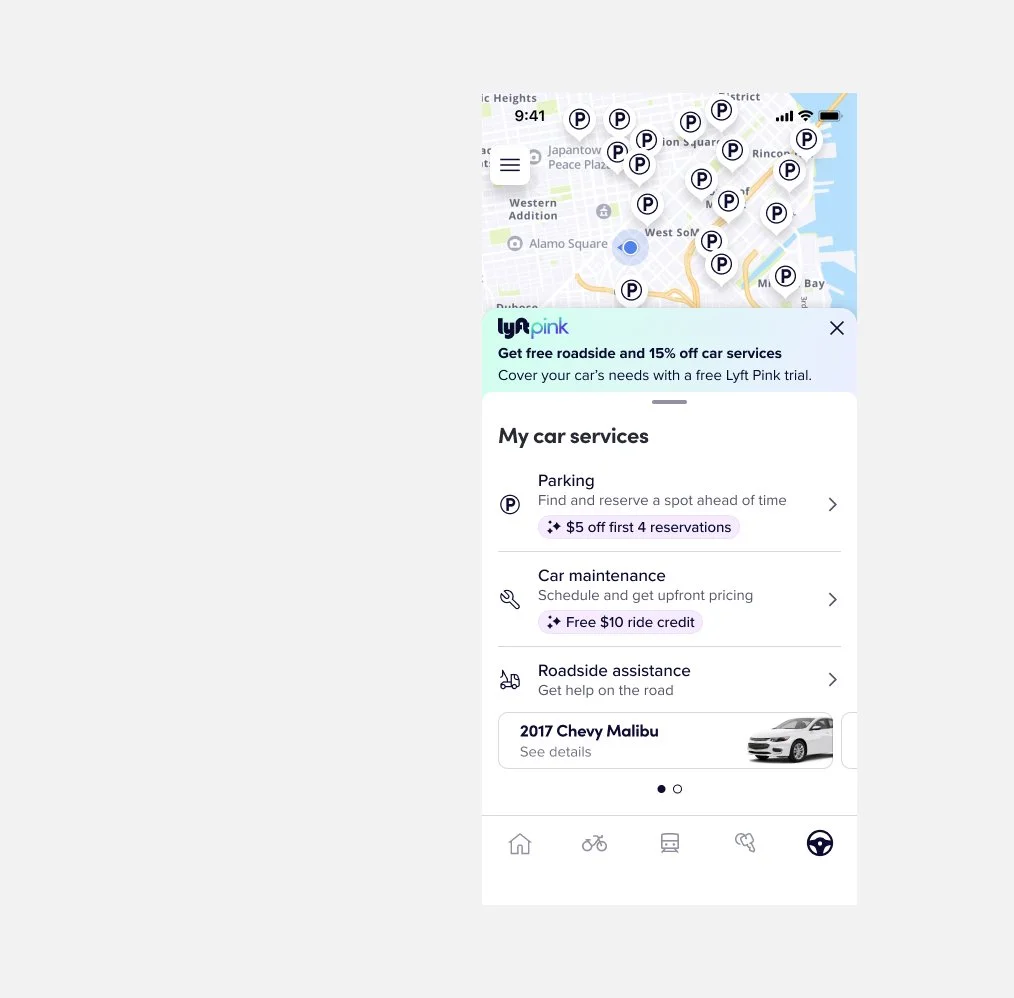
Designing Lyft’s My Car, a 0-1 line of business focused on making the hassles of car ownership a problem of the past
👨💻My Role:
Lead product designer owing the My Car’s core experience as well as the parking product line. Focused on developing a scalable MVP with a go-to-market emphasis that would also support growth initiatives.
Platform: iOS and Android
Tools used: Paper and Pencil, Figma, Invision app, Zeplin
Background
Lyft's mission is to improve people’s lives with the world’s best transportation.
To deliver on this mission the strategy was to build an end to end transportation network in a single app. In recent years Lyft had invested into bikes and scooters, integrating public transportation, and car rentals.
The only mode of transportation missing was the personal car.
CUSTOMER PROBLEM
🤬
Owning a car can be a real pain in the …gas
Top pain points of car ownership
Parking
Car drivers in the US alone spend over 3.6 billion hours and 1.7 billion gallons of fuel a year looking for parking. Additionally we have all been that person who assumes they will just find parking only to over spend out of desperation.
Car maintenance
Survey after survey we consistently found that there was a deep distrust of garages. Unless you are a qualified mechanic there is always some level of suspicion of being taken advantage when dropping your car off for routine maintenance like oil changes.
Roadside assistance
While not as high frequency, we found when drivers are stuck somewhere it can be an incredibly stressful event. Roadside assistance was a space that has seen any innovation in decades and felt outdated and lacking in the era of connected devices and services.
Gathering requirements
In order to craft the appropriate strategy I began to run a series of workshops and jam sessions aimed at building out design requirements. I met with crossfunctional stakeholders across the business to ensure I captured both business needs and customer needs to build a holistic experience.
Introduce the value of My Car to Lyft customers
We quickly learned customers do not understand what Lyft is trying to do with My Car. Consistently we heard that customers felt Lyft was trying to convert them to drivers. The lack of context and education became the foundation to the design strategy for My Car.
Build a single flexible core experience for all markets
Due to a variety of constraints, not all services were available in all markets, so the homepage needed to be adaptive for all markets with a single design. This approach also was aimed at future proofing the design to support new and emerging services.
Support growth initiatives to scale the business
Additionally we had growth metrics we needed to hit. With product and product marketing we developed an incentives based growth strategy. The new design direction had to support these initiatives in an intuitive way.
Initial MVP
The initial MVP experience was what we called the “Profile homepage”. This prioritized go-to-market and enabled the teams to have some connective tissue between the different product lines we were actively investigating.
A more user centric approach
Immediately after launching our MVP in limited markets I began to focus on an improved experience for both the customer and business. This work became known as the “Map based homepage”. From a product perspective we began to hone in on which product lines we were going to provide: parking, car maintenance and roadside assistance.
Adapting the Map based homepage
Through a series of refinements including de-cluttering the map, leveraging pragmatic list items UI, and building an incentive system our homepage now was super charged and ready to grow our business and find market fit.



📈 Results
Established My Car design principles which guided the core experience
Designed tested and improved upon a robust incentive system dramatically increased bookings
Integrated parking product line into Lyft Mode Selector
Increased product line engagement by 25% when transitioning from MVP to map based homepage





